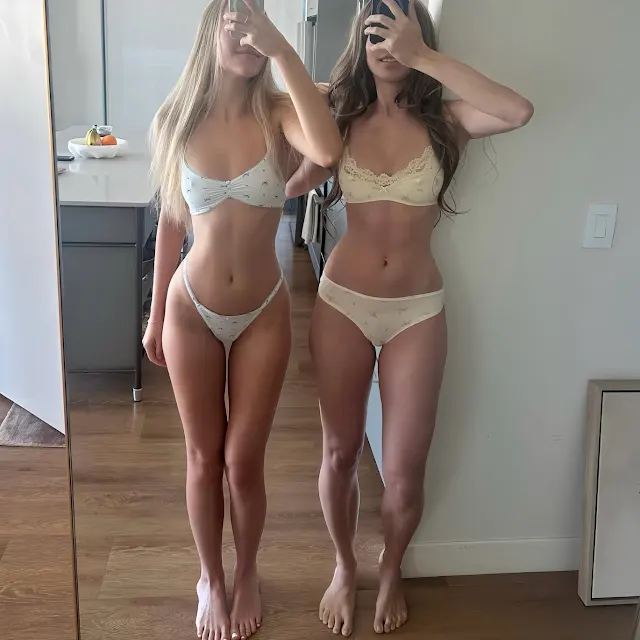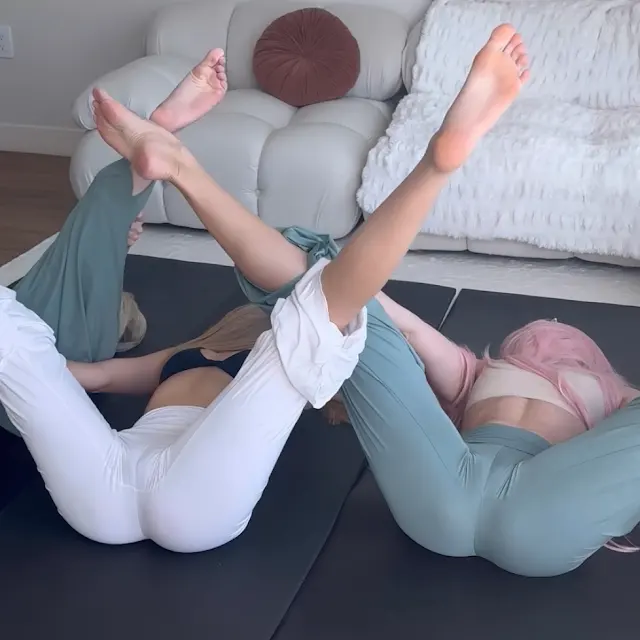
The sun was already high above the rooftops when Mia tied her hair into a tight bun and stepped into the dance studio. The scent of resin, sweat, and wooden floor filled the air—a smell only a true dancer could love. Today wasn’t just any training day. Today was about mastering her biggest challenge yet: the oversplit.
Mia had heard about oversplits before. Most of her fellow dancers could do front splits, some could slide into center splits, but oversplits were on another level—where one leg is raised on a block or chair, stretching beyond 180 degrees. It looked both beautiful and painful. And Mia wanted it.
For weeks, Mia had been pushing her flexibility with daily routines—hamstring stretches, hip openers, backbends. She watched videos of rhythmic gymnasts and contortionists, analyzing their moves. But even after all that, when she placed her front leg on a yoga block and tried to slide into the position, her body screamed in protest.
That morning, she arrived earlier than usual. The studio was quiet, the mirrors glowing in the light. She carried in her mat, two yoga blocks, and a foam roller. After rolling out her muscles and gently warming up, she stood in front of the mirror, took a deep breath, and began.First came the regular front split. She held it for thirty seconds. Then, carefully, she placed her front foot on one block. She lowered herself again, feeling the tightness tug behind her knee. Still not enough. She needed more time.
She leaned into her stretch and remembered her teacher’s words: “Oversplits aren’t just about being flexible. They’re about patience, consistency, and listening to your body.”

Across town, Mia’s best friend Nora was also in her studio, working on her own oversplit. Unlike Mia, Nora had a gymnastics background. She could bounce into an oversplit with ease. But today, something was off. A twinge in her hamstring made her hesitate. She backed off immediately.
“I used to think I was invincible,” Nora murmured to herself. “Until my body reminded me otherwise.”
Her coach had warned her before: flexibility should never come at the cost of injury. Overstretching could lead to muscle tears, joint strain, and chronic pain. That was the unspoken danger of oversplits—they looked elegant, but if rushed, could sideline even the strongest dancers.
So Nora did something she rarely did. She rested. She spent her session doing strengthening exercises instead—core work, glute bridges, ankle stabilization drills. “If I can’t stretch today, I’ll get stronger instead,” she said, proud of the mature decision.

Back in her studio, Mia was still battling her stretch. She switched sides, lifting her left leg onto the block. This side was her weaker one. Her breath grew heavier as the tension in her hip flexors intensified. Sweat beaded on her brow.
She paused. Something wasn’t right. Her muscles were too tight. She needed a break.
Flopping onto her back, Mia closed her eyes and let her breathing slow down. Her legs tingled, but in that moment of stillness, she felt proud. Not because she nailed the oversplit, but because she respected her limits. That, she thought, was real progress.
Later that evening, the two friends met up at a smoothie shop. They laughed over strawberry blends and protein balls.
“How’d it go today?” Nora asked.
“Let’s just say I made peace with gravity,” Mia replied, smiling. “I didn’t force it. I’m not there yet.”
Nora nodded. “Same here. My hamstring felt weird, so I skipped oversplits. Did some conditioning instead.”
They toasted their smoothies. It was comforting to know they weren’t alone in their journeys. Both had different backgrounds, different bodies, but the same goal—and the same respect for the process.

Over the next few weeks, both girls continued their training. Mia added foam rolling and massage gun therapy to her routine. She even tried a heated yoga session to loosen up. Every few days, she would test her oversplit. One block. Then one and a half. Then a second block.
One Saturday, as the sunlight filtered through the tall studio windows, Mia placed her right leg on two blocks. She adjusted her hips, pulled up through her chest, and slowly eased down into the stretch. She paused midway, checked her alignment in the mirror, and continued. Her hips hovered just above the ground.
Then—gently—she sank into the full oversplit.
For a second, she thought she was dreaming.
Tears welled in her eyes. Not from pain, but from the flood of emotions: the weeks of work, the hours of stretching, the nights of doubt. It had paid off. She wasn’t just flexible—she was strong, disciplined, and patient.
When she FaceTimed Nora that evening, she didn’t need to say a word. Nora saw it on her face.
“You did it, didn’t you?”
Mia nodded, grinning. “It finally happened.”
“I’m proud of you,” Nora said. “That’s not easy. You didn’t just stretch—you trained smart.”
Mia smiled. “And guess what? It didn’t hurt.”
“That’s how you know you did it right.”

Later that month, the dance studio hosted a showcase. Dancers performed solo routines, showcasing their skills and progress. Mia choreographed a piece around her journey—slow, graceful movements, deep lunges, and yes—an elegant, controlled oversplit.
When the audience applauded, she bowed not just for them, but for herself—for all the early mornings, the foam roller bruises, the almost-give-ups.
Behind the curtain, Nora hugged her tight. “That was stunning,” she whispered. “Now I’m inspired again.”
The oversplit wasn’t just a move—it was a metaphor. For pushing past limits, for knowing when to pause, and for the incredible strength that comes from knowing yourself.
Whether you’re a dancer, gymnast, or just someone striving for a goal, remember this: It’s not just about getting there. It’s about how you get there.
Over split? More like overjoyed.



